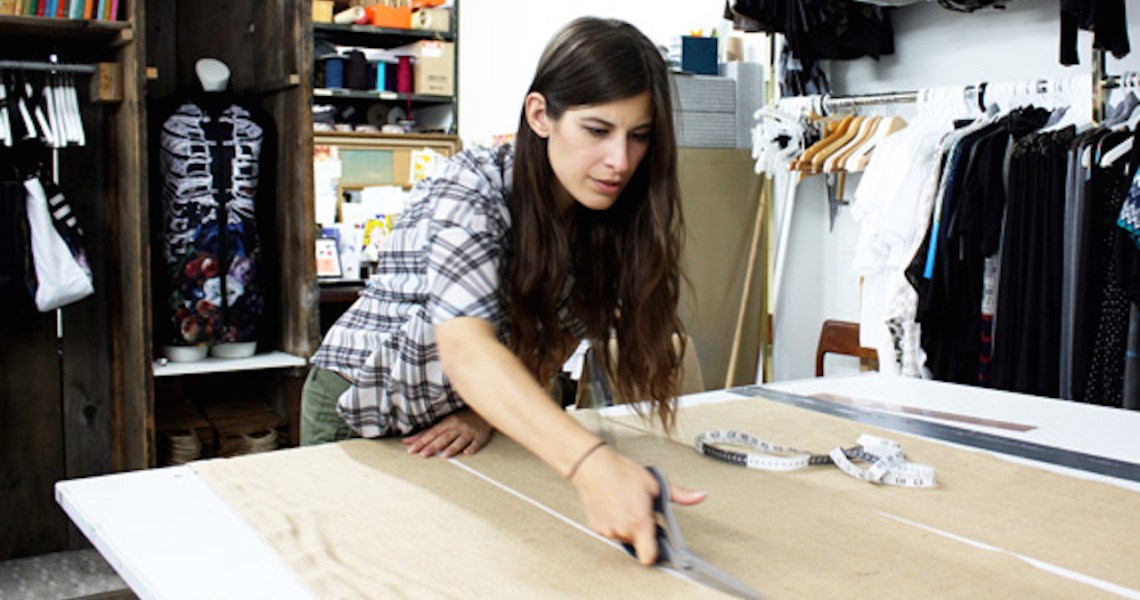While much of the excitement in circular fashion these days is in brand-owned resale, vintage fashion — loosely defined as clothes that are 20-100 years old — is another massive market. According to an Etsy spokesperson, someone searches for vintage fashion once every 10 seconds on the platform.
In 2022, Etsy’s revenue surpassed $2 billion, a record for the company. About 75% of Etsy’s revenue comes from its vintage and handmade marketplace. And despite an allegation from an investor in February that the company’s platform is rife with counterfeit goods, its stock price rose almost 4% earlier this week.
Because of the growing interest in vintage, Etsy is testing a feature called Make an Offer to capitalize on the market. This eBay-like price negotiation feature would allow sellers to suggest a starting price and let potential buyers make offers. Sellers can pick which listings they want to accept bids for and set floor prices. Unlike eBay, there’s no time limit. What’s more, sellers can manually select which offer they want to accept and directly contact the buyer to negotiate further.
According to an Etsy spokesperson, this kind of haggling was already happening unofficially on the platform. This test is a way to make that process more streamlined. The test opened on April 5 to all sellers and runs until approximately the end of May before closing again while Etsy can tweak the feature. In the first week, the feature has been popular, said a spokesperson for Etsy. Already, thousands of listers have opted in to use it and more than 1 million listings have been posted accepting bids.
The new feature was partly inspired by the changing macroeconomic environment, which is putting pressure on consumer spending. The state of the economy is already driving people to shop secondhand and vintage, and bids are a further way to offer more price flexibility for all involved.
“We know buyers are being more thoughtful about where they spend their money, and we believe that when they’re buying less, they’ll want items that mean more. This is where Etsy shines,” an Etsy spokesperson told Glossy via email. Etsy cited an internal survey of customers showing that 87% of Etsy’s customers shop the marketplace to find something they can’t get anywhere else. “Extra special items can be affordable when you shop directly from a small business. This strongly indicates that Etsy buyers are looking for unique items compared to mass-produced goods.”
Adam Siegel, co-founder and CEO of the resale company Recurate, told Glossy in late March that the sector has seen lots of innovation on the buyers’ side in recent months but less so for sellers. Ebay’s added jewelry and luxury product authentication feature has taken off, giving its buyers more confidence in making larger purchases. Brands like Dôen have started doing curated drops of secondhand products. Meanwhile, big platforms like GOAT have bought other services like Grailed to offer both peer-to-peer and consignment resale for their buyers.
Branded resale has the advantage of a brand knowing who has bought what in the past — they can then streamline the process of selling it back. Platforms like Etsy don’t have that advantage, so features like price flexibility and bidding can help complete more transactions for sellers. Josh Silverman, CEO of Etsy, said in the company’s most recent earnings call in February that improving the selling experience for Etsy’s sellers is one of the four key pillars of its future growth plan.
“We’re at a point where it’s not so much about getting people into resale, but it’s about making it easier,” said Karin Dillie, vp of partnerships at Recurate.
Last month, Etsy was briefly unable to pay a small percentage of its sellers due to complications from the collapse of Silicon Valley Bank. However, the company quickly remedied the problem by switching to another payment processor, though representatives declined to say which one the company used.




